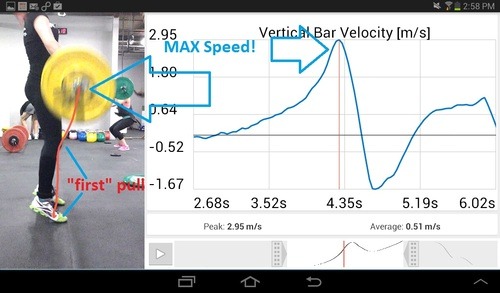Bearing everything we've discussed in mind, are there any benefits to training just the second-pull phase of the clean if one's aim is to train for speed/power and not necessarily to improve performance of the Olympic lifts? My initial reaction was 'no' but now I'm wondering if there might be something in it.
Presuming that an athlete builds raw strength through heavy back squats and/or deadlifts, could the inclusion of the slower first pull when training power cleans be
Second Pull Training
Performing Second Pulls from my knee area increased my Competition Deadlift. I based it on Bill Starr's "A Different Approach To The Deadlift". That is credited to Starr in, "The No Deadlift, Deadlift Training" article in a previous post.
Bill Starr's American Deadlift Record Training Program
It revolved around Heavy Good Mornings and Power Cleans.
I modified Starr's Power Cleans off the floor; performing them in the knee area.
That because, like most Conventional Deadlifters, I blow the weight off the floor; my sticking point is in the knee area.
Thus, preformed Power Cleans and High Pulls increased my Pulling Power in that knee area.
I continue to preform Second Pulls from the knee area.
Heavy Swings
However, I found the Heavy Kettlebell Swings and Heavy Dumbbell Swings (holding the Dumbbells out to the side of the legs) elicited a similar training response.
Research has demonstrated that Heavy Swings elicit and produce Power Output that is similar to the Olympic Pulls.
...could they serve a purpose in general power training for athletics or would the athlete merely be short-changing themself in terms of the training effect of the full lift?
No
Not based on my training results and Phil Rivera (another Powerlifter) who slight modified Starr and my No Deadlift Training approach.
Phil's modification was to perform Good Mornings and Power Cleans for three weeks. On the fourth week, Phil Deadlifted.
Phil's Deadlift and Power increased with that approach.
With that said, I am a huge proponent of...
Olympic High Pulls
For athletes interested with increasing Power, Olympic High Pulls are very effective and quickly learned.
1) Allen Hedrick: The Clean High Pull
Increase muscular power and overall athleticism with this challenging, yet fun, lift.

www.t-nation.com
The majority of the power developed in either the clean or the snatch occurs during the second pull phase (the movement from just above the knee until the bar reaches approximately sternum height).
In both the clean and snatch, once the bar reaches sternum height the lifter normally drops under the bar. However, this catch phase doesn't contribute to the power developed in these movements.
As discussed, one advantage of the clean high pull over the full clean is that the athlete doesn't have to catch the bar. As a result, you can typically use heavier loads.
2) Is It Time to Dump the Catch with the Power Clean? - SimpliFaster
If economy of time and effect is the intent, along with creating more power and speed at different intensities with a total body movement, the clean high pull just might be your movemet.
Trap Bar Jumps
Research shows that Trap Bar Jumps evoke approximately the same Power Output as Olympic Pulls. Dumbbell Dump Jumps would work in a similar way to the Trap Bar.
Take Home Message
Research shows that any of these method will increase Power Output, when preformed correctly.
Partial Plyometric Good Mornings
This is a novel approach for increasing Strength for many Conventional Deadlifters with a sticking point in the knee area.
Another topic for another time.


